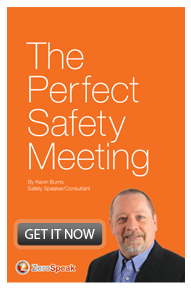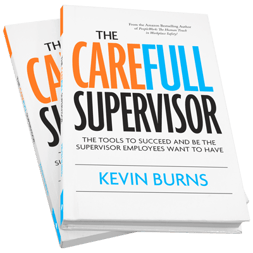If safety meetings are not fun or engaging for attendees, they won’t remember it.

Part of the overall strategy for safety communication and meetings should be a requirement to avoid mind-numbing and boring your people whenever possible. But that's tough when the subject-matter and even worse, the presenters, are boring.
You make it so much more difficult for employees to engage and stay sharp if you insist on throwing every boring statistic, figure, graph and performance chart that you can lay your hands on at them in one meeting - and expecting any level of recall.
Boring presenters are not born - they are made by the example of those boring presenters who they've observed. Over time, bad meetings evolve into something worse by exposure to mind-numbing safety meetings featuring a parade of PowerPoint armed, personality-deficient robots.
PowerPoint is the seventh pit of hell. It's Corporate Karaoke – the word-for-word, sing-along regurgitation of every thought in a presenter’s head posted on a slide in tiny font type. Your people disengage from the safety meeting the moment you put up a slide with seven lines of type with some boring blue background.
You've got to make safety sexy. If it’s not fun or engaging for attendees, they won’t remember it. Now, don't take that as license to use nudie magazine centerfolds with the words "Safety First" splayed across them. That's mixed messaging - distracting from safety.
Here are three strategies for building better safety meetings that engage:
1People Engage With Other People - Stop using PowerPoint as the message. It is not the message. It is a supplementary medium to help you carry a more powerful message, but it is no substitution for the human element of engaging people.
People don’t engage with PowerPoint slides. They engage with other people (tweet this).
PowerPoint is for lazy people – people who won’t take the time to create a workplace safety communication strategy that engages the hearts and minds of employees. Stop walking into your safety meetings with a shopping list of thoughts you think need to be in the presentation. Most don’t.
Engage your people. Engage hearts and minds. When you capture hearts and minds, you engage them in the same way you want them to engage themselves. If you believe it, they’ll believe it. If they believe it, they will act on it. If they act appropriately, they will get to Zero.
2Keep It Simple. One Idea At A Time - Safety meetings are crucial to the ongoing safety of your employees. But you can't just stick any old thing in your safety meetings and think "well, we had our meeting." It's not about filling a time-slot. It's about making sure that you advance a new idea and call-to-action. Your organization needs to become better, not just better-informed.
Safety managers need to step up and take control of who and what gets exposure to the minds of the employees - and protect the workers from being exposed to conflicting pieces of information or too much information at any one time.
Getting others on-board with simplifying their presentations to be more dull-resistant should be easy: planning. If you can plan a safety procedure, an escape or a marshalling area, then there should be no problem planning a safety meeting. And you must plan it: it's theme, points of discussion, content and consistency of message. And the message needs to be tight across everyone who will present.
Shorten the meeting with one thought at a time. Consider sticking all of the supplementary information (anything you would stick on those tiny lines of type on PowerPoint slides) into newsletters, videos, web portals, etc.
3Create A Call-To-Action - A call-to-action is the what you want your people to do differently at the end of the meeting. Start your planning at the end and work backwards. Figure out what you want them to do differently or better and then point everything you do at that. Everything you do and talk about in the meeting should go to support the call-to-action. Make sure each slide, point-of-discussion, speech, instruction or handout supports that one thing.
 Safety managers complain on LinkedIn that they are out of ideas for their safety meetings. They actively solicit ideas to cover off content for their safety meetings. You don't "fill" a safety meeting with stuff. You have a safety meeting with a specific purpose in mind.
Safety managers complain on LinkedIn that they are out of ideas for their safety meetings. They actively solicit ideas to cover off content for their safety meetings. You don't "fill" a safety meeting with stuff. You have a safety meeting with a specific purpose in mind.
It's not enough to know the information. They must now do something with the information. That's why you start with a call-to-action in planning and work backwards from there.
These are the three biggest lessons I've learned from watching other presenters when I speak at safety meetings. Have a look at how I've helped make a difference at safety meetings in the past.
Kevin Burns is a management consultant, safety speaker and author of "The Perfect Safety Meeting" and his newest #1 Amazon Health & Safety Bestseller, "Running With Scissors - 10 Reasons To Invest in Safety In Slow Times." He is an expert in how to get through to people - how to talk with them so they hear and understand. Kevin's presentation "Trust The Process - Instill A Safety Attitude To Build An Engaged Culture Of Safety" will help your organization reach the following goals: better engagement and buy-in to safety, increased teamwork, better communication, lower turnover resulting in increased profits from production.



